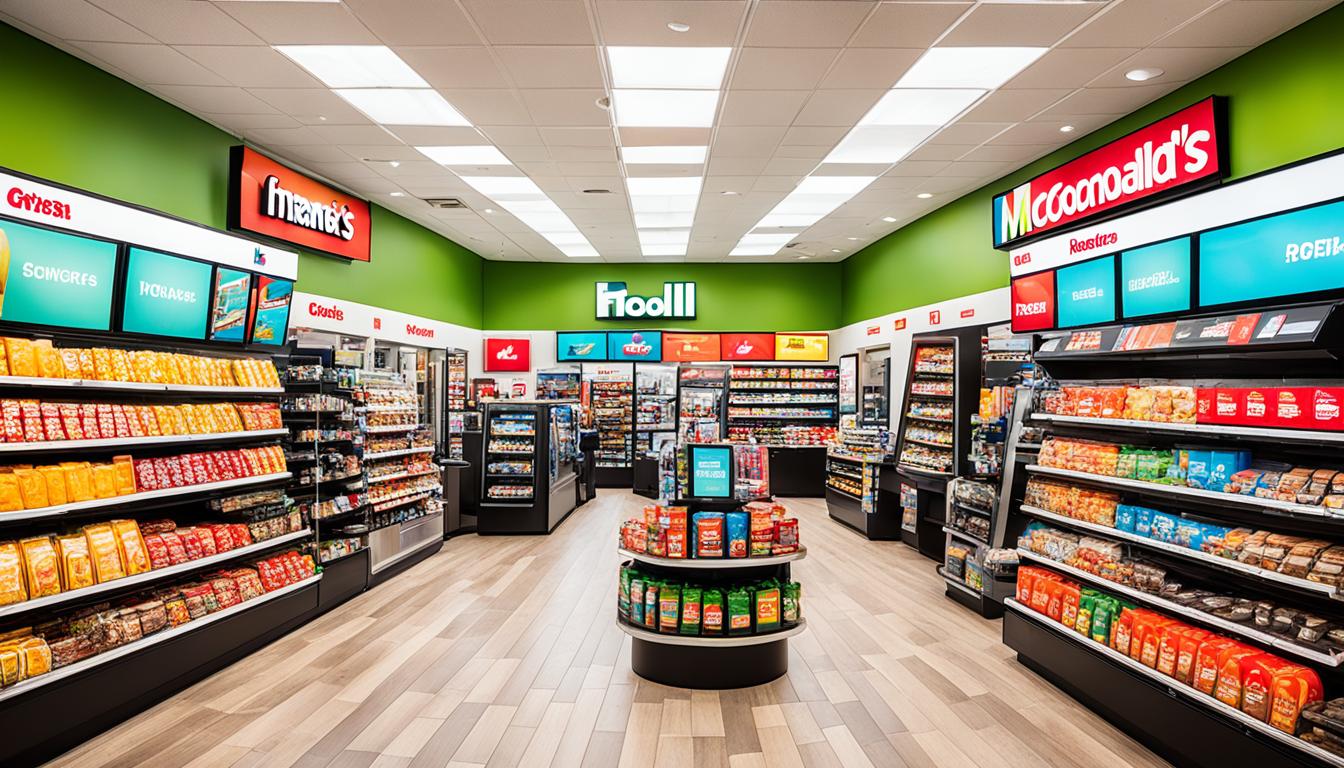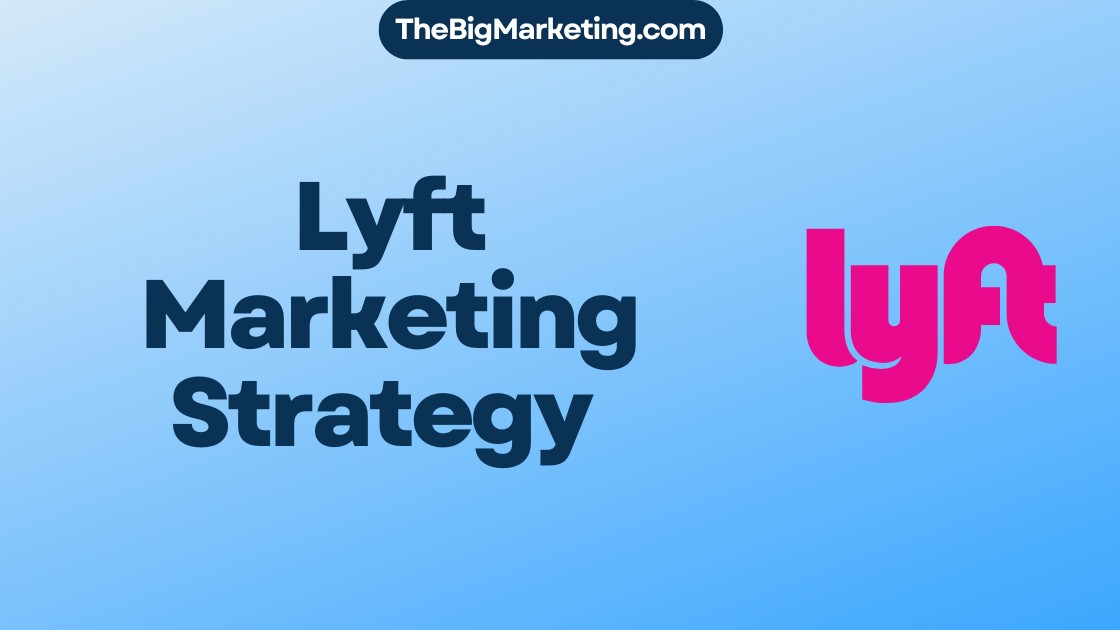A brand extension is when a company uses an established brand name to launch a new product or enter a new product category. The strategy behind brand extension is to leverage the existing brand equity and customer loyalty of the established brand to introduce new offerings. This can help companies reach new demographics, expand their customer base, increase sales, and boost profits.
Brand extension works when there is a logical association between the original product and the new offering. However, it can fail if the new product is unrelated or creates a negative association. Successful brand extensions allow companies to diversify their offerings and gain a competitive advantage over rivals.
Examples of successful brand extensions include Apple with its iPod, iPad, and iPhone, and Google with its Play Store and Chromebooks.
Key Takeaways:
- Brand extension is the use of an established brand name to launch new products or enter new markets.
- It leverages the existing brand equity and customer loyalty to expand customer base and increase sales.
- A logical association between the original product and the new offering is essential for success.
- Examples of successful brand extensions include Apple and Google.
- Brand extension can diversify offerings and provide a competitive advantage.
What is Brand Extension?
A brand extension, also known as brand stretching, refers to the utilization of an established brand name on a new product or product category. The objective of brand extension is to leverage the brand equity and loyalty associated with the established brand to introduce new offerings. By capitalizing on an existing customer base, companies aim to reach new demographics and expand their market share. The success of a brand extension hinges on the presence of a clear association between the original product and the new offering. However, failure may occur if the new product is unrelated or creates a negative association. A well-executed brand extension can help companies increase sales, boost profit margins, and fortify their overall brand presence.
Key Benefits of Brand Extension:
- Increased customer reach and expanded demographic targeting.
- Enhanced market share and competitiveness.
- Utilization of existing brand equity and customer loyalty.
- Potential for increased sales and revenue generation.
- Improved profit margins and business growth opportunities.
Incorporating brand extension strategies into a company’s marketing approach enables the introduction of new offerings under the umbrella of an established brand. This strategic move leverages the positive associations consumers have with the original product and extends it to the new product, creating a sense of familiarity and trust. Additionally, successful brand extensions have the potential to attract new customer segments, tap into previously untapped markets, and drive profits.
| Key Elements of a Successful Brand Extension: | Examples |
|---|---|
| Clear association between the original product and the new offering | Coca-Cola launching new flavors |
| Consistent brand messaging and positioning | Apple expanding from computers to iPhones |
| Aligning with customer expectations and preferences | Google expanding its product offerings with Chromebooks |
| Strong brand equity and customer loyalty | BMW venturing into electric vehicles with the i-Series |
| Relevance to the target market and customer base | Nike launching athletic lifestyle clothing |
Brand extension provides companies with a strategic avenue for growth and diversification without the costs associated with building an entirely new brand. By tapping into the existing brand equity, companies can reduce marketing expenses and leverage the customer loyalty they have already established. Successful brand extensions can create a competitive advantage, strengthen brand positioning, and pave the way for sustained business success.
How Brand Extension Works
Brand extension is a strategy that leverages the reputation, brand loyalty, and recognition of an established product or brand to launch a new product or enter a new market. The goal is to build upon the success and positive perception of the original brand to introduce new offerings.
In order for brand extension to be successful, there must be a logical association between the original product and the new offering. This association helps to maintain the brand’s image and avoids brand dilution. For example, when Apple extended its brand with the launch of the iPod, the new product had a clear connection to the existing line of computers and appealed to a similar target audience.
Successful brand extensions offer companies the opportunity to diversify their offerings and reach new demographics. By leveraging the existing brand equity and customer loyalty, companies can increase their market share and gain a competitive advantage over rivals. The established brand acts as a powerful marketing tool, as customers already have a positive perception of the brand and are more likely to try new offerings.
Benefits of Brand Extension:
- Expanded product portfolio
- Increase in market share
- Growth in customer base
- Enhanced brand reputation
- Competitive advantage
With a successful brand extension, companies can capitalize on their reputation, brand loyalty, and customer trust to introduce new products that meet the needs and preferences of their target market. By carefully selecting the new offerings and ensuring a logical association with the original brand, companies can successfully extend their brand and drive business growth.
Real World Examples of Brand Extension
Brand extension is a powerful strategy that allows companies to expand their offerings and cater to diverse customer needs. Let’s explore some real-world examples of successful brand extensions:
Boston Market: Frozen Dinners
Boston Market, a popular restaurant chain known for its rotisserie chicken and home-style meals, successfully extended its brand by launching a line of frozen dinners. This brand extension capitalizes on the existing customer loyalty and offers consumers the convenience of enjoying Boston Market’s delicious fare in the comfort of their own homes.
Breyers: Oreo Collaboration
Breyers, a beloved ice cream brand, collaborated with Oreo, a well-known cookie brand, to create a range of ice cream flavors featuring Oreo cookie chunks. This brand extension leverages the strong customer trust and loyalty associated with both Breyers and Oreo, resulting in a sweet and irresistible treat for ice cream enthusiasts.
Google: Play Store and Chromebooks
Google, renowned for its search engine, has successfully extended its brand with products and services like the Play Store and Chromebooks. The Play Store offers a wide range of apps, music, movies, and games, allowing users to enhance their digital experiences. Chromebooks, on the other hand, are reliable and affordable laptops that offer seamless integration with Google’s suite of applications and services.
Coca-Cola: Flavors and Varieties
Coca-Cola, a leading beverage company, has expanded its brand by offering a wide variety of flavors and beverage options to cater to different consumer preferences. With options like Coca-Cola Zero, Diet Coke, and Cherry Coke, Coca-Cola ensures that customers can enjoy their favorite beverage in the flavor that suits their taste.
These examples demonstrate how brand extension can provide new products or combine existing products to meet customer demands and preferences. By leveraging the existing brand equity, reputation, and customer loyalty, companies can successfully diversify their offerings and strengthen their market presence.
| Brand | Brand Extension |
|---|---|
| Boston Market | Frozen Dinners |
| Breyers | Oreo Collaboration |
| Play Store and Chromebooks | |
| Coca-Cola | Flavors and Varieties |
These brand extensions exemplify the successful integration of complementary products and the exploration of new market opportunities. By aligning with customer preferences and leveraging established brand reputations, these companies have capitalized on their existing customer base while attracting new consumers.
Section 5 of the article will explore some criticism of brand extension and the potential challenges that companies may face when implementing this strategy.
Criticism of Brand Extension
While brand extension can be a cost-effective strategy compared to introducing a completely new product, it is not without its criticisms. One criticism is that brand extension can dilute the brand identity if the new product is not closely related to the original offering. Customers may have a specific perception of the brand and its values, and introducing unrelated products can create confusion and weaken the brand identity. Another criticism is that brand extension can cast a negative light on the new product if it is seen as mismatched or not aligned with the brand’s image.
Unsuccessful brand extensions can result in poor sales and damage to the brand’s reputation. For example, Levi’s Tailored Classics, a line of men’s three-piece suits, failed because it did not align with the brand’s association with rugged casual wear. It is crucial for brand managers to carefully consider the target audience and ensure that new products fit well within the company’s brand identity.
| Brand Extension Criticisms | Implications |
|---|---|
| Dilution of brand identity | -Confusion and weakened brand identity -Loss of customer trust and loyalty |
| Mismatched or misaligned brand image | -Negative perception of the new product -Poor sales and damage to brand reputation |
Brand managers should be cautious when undertaking brand extensions and ensure that the new product or category aligns with the core values and image of the brand. This can be achieved through thorough market research, understanding customer perceptions, and maintaining consistency in brand messaging. Successful brand extensions are those that reinforce the brand’s identity and strengthen the overall brand perception among consumers.
Why is Brand Extension Pivotal for Businesses?
Brand extension plays a pivotal role in driving business growth and achieving success. By leveraging an established brand, companies can increase their success rate compared to launching a completely new brand. This provides a competitive advantage and higher chances of success in the market.
One of the key benefits of brand extension is the cost savings it offers. Instead of starting from scratch, businesses can capitalize on the existing brand recognition, trust, and customer loyalty. This eliminates the need to invest heavily in creating brand awareness and building a customer base from the ground up.
Furthermore, customers are more likely to embrace new offerings from a trusted brand they already know and trust. The positive perception of the brand enhances customer loyalty and encourages them to try out new products or services.
Brand extension also helps businesses remain competitive by expanding their offerings. By introducing new products or entering new markets under an established brand, businesses can appeal to a wider range of customers and cater to different consumer needs. This enables them to capture a larger market share and increase their overall growth potential.
The success of brand extension lies in the competitive advantage it brings. By offering products or services that are not available from competitors, businesses can differentiate themselves and attract customers who are seeking unique offerings. This gives them an edge in the market and helps them stay ahead of the competition.
Overall, brand extension is pivotal for businesses as it drives growth, ensures a higher success rate, offers cost savings, fosters customer loyalty, and provides a competitive advantage. It allows companies to expand their market presence, diversify their offerings, and thrive in a competitive business landscape.
| Benefits of Brand Extension for Businesses |
|---|
| Higher success rate compared to launching a new brand |
| Cost savings by leveraging existing brand recognition |
| Enhanced customer loyalty and trust |
| Ability to expand offerings and appeal to a wider range of customers |
| Competitive advantage over rivals |
What Do You Need for a Successful Brand Extension?
A successful brand extension requires several key factors to be in place. These include a strong brand image, brand reputation, customer trust, a data-driven strategy, and thorough market research. Let’s explore each of these elements in detail:
Strong Brand Image
A strong brand image is crucial for a successful brand extension. It is essential to have a recognizable and trusted brand identity that resonates with customers. A well-established brand image creates a foundation of trust and familiarity, making it easier to introduce new products or enter new markets.
Brand Reputation
The reputation of a brand plays a critical role in brand extension. Customers need to have confidence in the brand’s ability to deliver quality and meet their needs. A positive brand reputation helps build customer trust and encourages them to try new offerings from the brand.
Customer Trust
Customer trust is directly linked to brand reputation and plays a significant role in the success of a brand extension. Customers who trust a brand are more likely to try new products or services under the same brand name. Building and maintaining customer trust is crucial for a successful brand extension.
Data-Driven Strategy
A data-driven strategy is essential for a successful brand extension. By using market research and gathering the right insights, companies can understand customer preferences, perceptions, and market trends. This data serves as a guiding force in developing a targeted strategy that aligns with customer expectations and positions the new product for success.
Market Research
Market research is a critical component of brand extension. It helps companies gain insights into customer preferences, market trends, and potential opportunities. By conducting thorough market research, companies can identify gaps in the market, understand customer needs, and develop innovative products or services that meet those needs.
A successful brand extension leverages a strong brand image, brand reputation, customer trust, a data-driven strategy, and market research. By incorporating these key elements into their brand extension strategy, companies can increase their chances of success and effectively expand their offerings to reach new demographics and enhance their overall brand presence.
Types of Brand Extensions with Examples
Brand extensions are a strategic way for companies to expand their brand presence and cater to different customer needs. There are several types of brand extensions that companies can employ, each with its own unique advantages. Let’s explore some of the most common types of brand extensions, along with real-world examples:
1. Line Extension
Line extension involves adding new products to an existing product line. This type of brand extension allows companies to introduce variations of their existing offerings, expanding their range of choices for customers. For example, Coca-Cola has successfully implemented line extensions by introducing new flavors like Coke Zero to cater to different consumer preferences.
2. Category Extension
Category extension involves entering a new product category that is related to the company’s existing offerings. By leveraging their brand equity and customer trust, companies can expand their market presence and reach new customer segments. Google is a prime example of successful category extension, as they expanded beyond their search engine to offer products like Chromebooks, which cater to the technology needs of their user base.
3. Complementary Product Extension
Complementary product extension involves offering products that work well with existing products. This type of brand extension allows companies to provide additional value to their customers and increase customer loyalty. Adidas, known for its sports shoes, successfully extended its brand by offering sports apparel that complements their footwear, creating a cohesive brand experience for their customers.
4. Customer Base Extension
Customer base extension targets the same demographic with new product categories. This type of brand extension allows companies to leverage their existing customer base and expand their product offerings to cater to different needs and preferences. Dyson, renowned for its vacuum cleaners, expanded into the market of high-powered fans, targeting the same demographic of customers who value innovative and high-quality home appliances.
5. Company Authority Extension
Company authority extension leverages the brand’s reputation and authority in one product category to enter new product categories. This type of brand extension allows companies to establish themselves as experts and trusted providers in new markets. Apple, originally known for its computers, successfully extended its brand authority by venturing into the mobile phone industry with the introduction of the iPhone, leveraging its reputation for innovation and user-friendly technology.
6. Brand Lifestyle Extension
Brand lifestyle extension involves launching lifestyle products that align with the brand’s image and values. This type of brand extension allows companies to connect with their target audience on a deeper level by offering products that reflect their customers’ desired lifestyle. Red Bull, known for its energy drinks, organizes extreme sports events, aligning with their brand’s energy and excitement, and strengthening their brand image in the minds of their audience.
These are just a few examples of the different types of brand extensions that companies can implement. Each type offers unique opportunities for companies to expand their brand presence, attract new customers, and strengthen their market position. By understanding the various types of brand extensions and analyzing successful examples, companies can develop effective brand extension strategies to thrive in competitive markets.
Established Brand Extension Strategies for Success
When it comes to brand extension, following established strategies is crucial for ensuring success. These strategies help companies navigate the challenges of brand dilution, align their new products with customer expectations, and maintain brand equity. Here are some key strategies that can increase the chances of a successful brand extension:
Market Research
Conducting comprehensive market research is essential for understanding customer demands, preferences, and trends. By gaining insights into the target audience, companies can identify opportunities for brand extension and ensure that the new product aligns with customer expectations. Market research helps avoid brand dilution by ensuring that the new offering is closely related to the existing brand and meets the needs of the target market.
Assessing Brand Equity
Before embarking on a brand extension, it’s important to assess the strength of the brand equity. A strong brand equity indicates that the brand has a positive reputation, customer trust, and recognition. This strong foundation supports the extension and helps in establishing brand awareness and acceptance for the new offering.
Proper Positioning and Marketing
Positioning the new product correctly and developing targeted marketing campaigns are essential for a successful brand extension. Companies need to establish brand awareness, communicate the benefits of the new offering, and maintain consistency with existing brand guidelines. This ensures that customers understand the connection between the new product and the established brand, creating a seamless brand experience.
Product Innovation
Introducing innovative and unique features in the new product is essential to differentiate it from competitors and add value to customers’ lives. Product innovation plays a crucial role in attracting customers and generating interest in the brand extension. Whether it’s through new technologies, improved functionality, or enhanced designs, innovation helps create a compelling proposition for customers.
Following these established strategies can significantly increase the likelihood of a successful brand extension. Market research provides valuable insights into customer preferences and helps avoid brand dilution. Assessing brand equity ensures a strong foundation for the extension, while proper positioning and marketing establish brand awareness and consistency. Finally, product innovation helps differentiate the new offering and adds value to customers’ lives.
Examples of Successful and Unsuccessful Brand Extensions
Successful brand extensions can be seen as powerful illustrations of effective marketing strategies. These examples demonstrate how a well-executed brand extension can leverage an existing brand’s strong identity and reputation to drive success in new product categories.
One of the most notable examples is Apple’s brand extension from computers to products like the iPod, iPad, and iPhone. Apple’s strong brand identity, built on a reputation for innovation and quality, allowed them to seamlessly transition into these new product categories. The success of these brand extensions can be attributed to Apple’s ability to maintain a consistent brand image and meet customer expectations, resulting in increased sales and customer loyalty.
On the other hand, there have been instances of unsuccessful brand extensions that highlight the importance of aligning the new product with the brand’s image and meeting customer expectations. Colgate’s attempt to sell frozen meals is an example of a brand extension that did not resonate with consumers. The mismatch between the product category and Colgate’s brand identity ultimately led to poor sales and a negative impact on their reputation.
Successful Examples:
- Apple’s expansion from computers to the iPod, iPad, and iPhone
- Coca-Cola’s introduction of new flavors
- Google’s expansion through the Play Store and Chromebooks
Unsuccessful Examples:
- Colgate’s attempt to sell frozen meals
- Levi’s Tailored Classics line of men’s three-piece suits
- These examples underscore the importance of careful brand identity alignment and meeting customer expectations to achieve a successful brand extension. By analyzing both successful and unsuccessful brand extensions, companies can gain valuable insights for their own brand extension strategies.
Conclusion
Brand extension is a powerful marketing strategy that enables companies to capitalize on their established brand names, reputation, and customer loyalty to introduce new products or enter new markets. By implementing effective strategies, careful positioning, and maintaining a strong brand identity, companies can successfully expand their offerings, reach untapped demographics, and enhance customer loyalty.
Understanding the benefits and risks associated with brand extension is crucial for companies aiming to thrive in today’s competitive marketplace. By leveraging successful strategies, companies can strengthen their brand reputation and gain a competitive edge. Furthermore, brand extension serves as a catalyst for customer loyalty, enabling companies to maintain long-term relationships with their customers.
By embracing brand extension, companies can unlock new growth opportunities and enhance their overall brand presence. Successful brand extension requires a strategic approach, continuous market research, and innovation. By aligning the new product with the brand’s image and customer expectations, companies can successfully execute brand extensions that drive customer engagement, increase market share, and ultimately lead to long-term business success.




